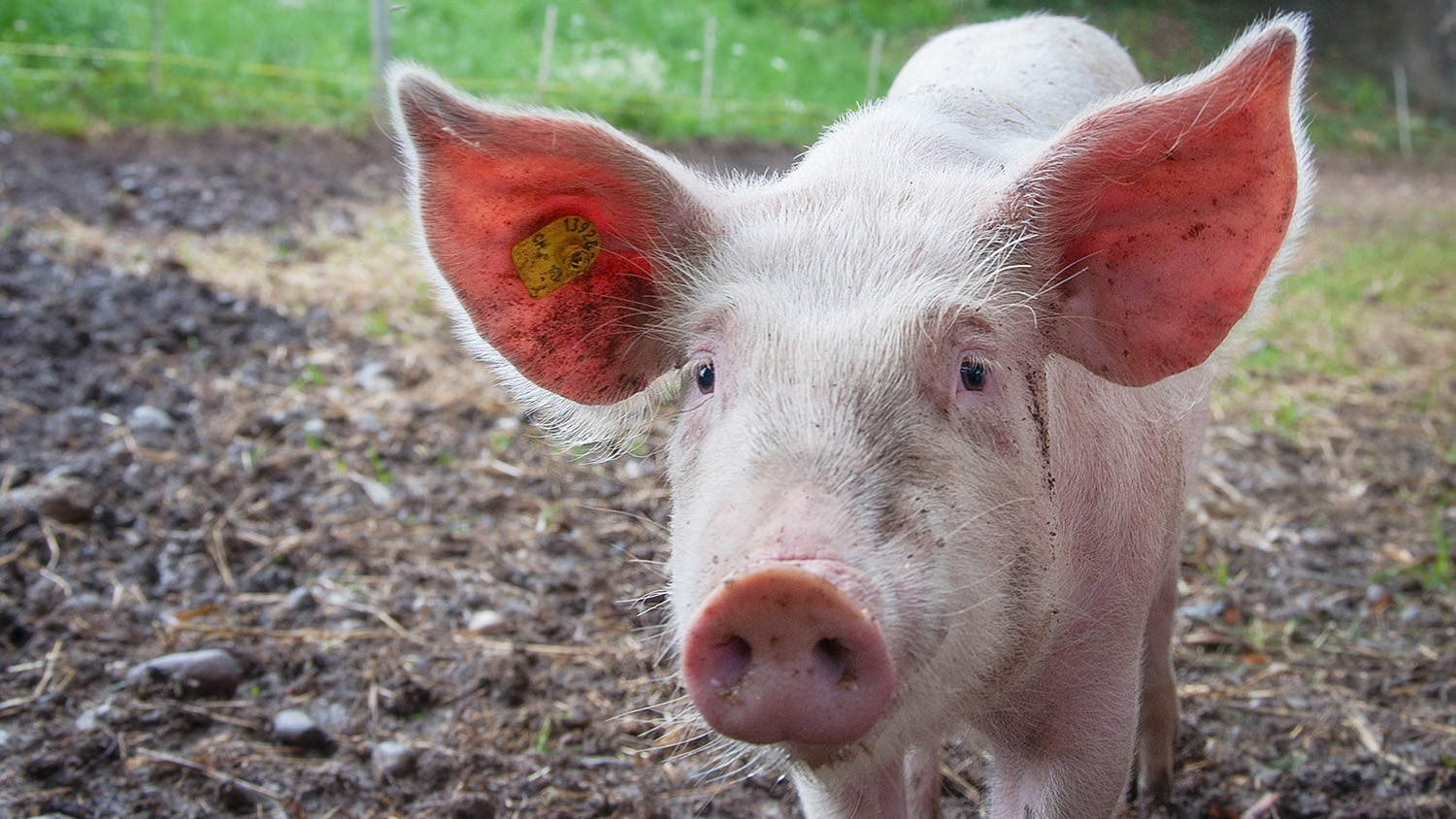Vehicles Play Important Role in PRRSV Transmission

For Immediate Release
In the battle against disease transmission, pork farmers have to look out for more than just sick pigs. Researchers from North Carolina State University modeled nine different potential transmission routes for porcine reproductive and respiratory syndrome virus (PRRSV), and found that trucks used to move not only animals, but also farm workers and feed, can be carriers for disease spread.
PRRS, the syndrome caused by the virus, causes respiratory disease and decreased reproduction in pigs, and is the most economically significant disease affecting U.S. swine production.
“We created a novel mathematical model that includes potential transmission routes that haven’t been explored in depth,” says Gustavo Machado, assistant professor of population health and pathobiology at NC State and corresponding author of a paper describing the work.
Machado and senior postdoctoral researcher Jason Galvis modeled nine modes of between-farm transmission of PRRSV based on data from three swine farms. The modes included: farm-to-farm proximity; transmission between farm animals; “re-breaks” for farms with a previous outbreak; between-farm vehicle movements; and animal byproducts in feed ingredients.
The model was used to estimate the weekly number of outbreaks and their locations. Those estimates were then compared to available outbreak data so that the researchers could quantify the contributions of each transmission route.
While pig movements and farm proximity were still the leading causes of disease transmission, the researchers found that the vehicles used to transport pigs were a major contributor to PRRSV spread, contributing up to 20% of infections. Animal byproducts and feed, on the other hand, were found to have little effect on transmission.
“If I have a farm and receive an infected pig, that will only affect my farm,” Galvis says. “But if the same truck that brought me that pig then travels to other farms, it can carry that contamination with it. This is the first time we’ve included vehicle transmission in our model, and it does have an impact.”
The aim of the model, researchers say, is to enable farmers to pinpoint areas where enhanced biosecurity and intervention efforts may be helpful.
“If improving truck sanitation practices or adding cleaning stations could reduce PRRSV transmission, then that’s much more cost-effective than treating the outbreaks when they occur,” Machado says.
The model is open access and free to the public. The research appears in Emerging and Transboundary Diseases and is supported by the Fats and Proteins Research Foundation. Galvis is first author. The model developed here is also available for The Rapid Access Biosecurity (RAB) app™ user. For more information about RABapp™ visit: https://machado-lab.github.io/rabapp/
-peake-
Note to editors: An abstract follows.
“Modelling and assessing additional transmission routes for porcine reproductive and respiratory syndrome virus: vehicle movements and feed ingredients”
DOI: 10.1111/tbed.14488
Authors: Jason A. Galvis, Cesar A. Corzo, Gustavo Machado, North Carolina State University
Published: Online Feb. 22, 2022 in Emerging and Transboundary Diseases
Abstract:
Accounting for multiple modes of livestock disease dissemination in epidemiological models remains a challenge. We developed and calibrated a mathematical model for transmission of porcine reproductive and respiratory syndrome virus (PRRSV), tailored to fit nine modes of between-farm transmission pathways including: farm-to-farm proximity (local transmission), contact network of batches of pigs transferred between farms (pig movements), re-break probabilities for farms with previous PRRSV outbreaks, with the addition of four different contact networks of transportation vehicles (vehicles to transport pigs to farms, pigs to markets, feed and crew) and the amount of animal by-products within feed ingredients (e.g. animal fat or meat and bone meal). The model was calibrated on weekly PRRSV outbreaks data. We assessed the role of each transmission pathway considering the dynamics of specific types of production (i.e., sow, nursery). Although our results estimated that the networks formed by transportation vehicles were more densely connected than the network of pigs transported between-farms, pig movements and farm proximity were the main PRRSV transmission routes regardless of farm types. Among the four vehicle networks, vehicles transporting pigs to farms explained a large proportion of infections, sow = 20.9%; nursery = 15%; 24 and finisher = 20.6%. The animal by-products showed a limited association with PRRSV outbreaks through descriptive analysis, and our model results showed that the contribution of animal fat contributed only 2.5% and meat and bone meal only 0.03% of the infected sow farms. Our work demonstrated the contribution of multiple routes of PRRSV dissemination, which has not been deeply explored before. It also provides strong evidence to support the need for cautious, measured PRRSV control strategies for transportation vehicles and further research for feed by-products modeling. Finally, this study provides valuable information and opportunities for the swine industry to focus effort on the most relevant modes of PRRSV between-farm transmission.


